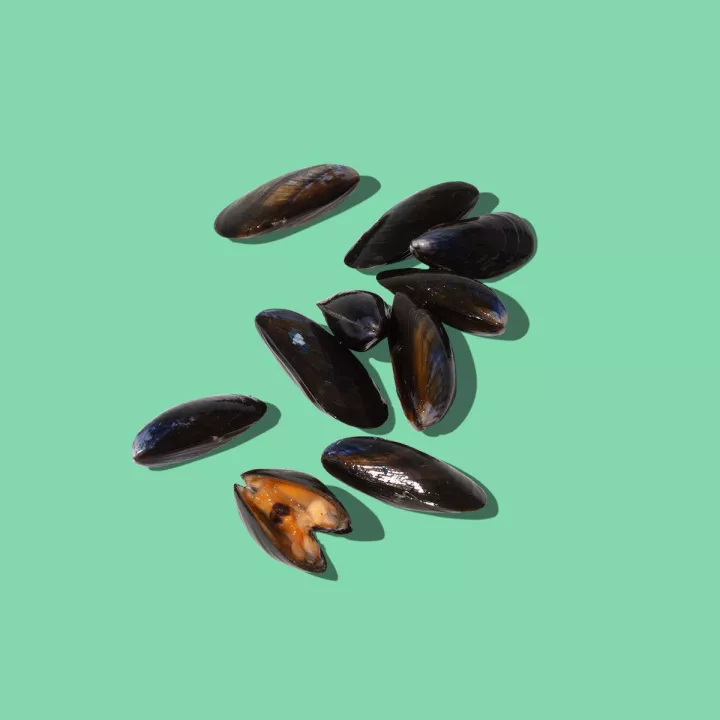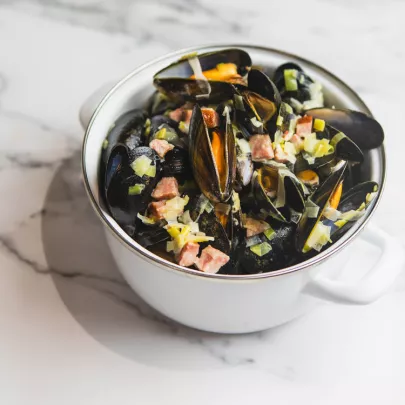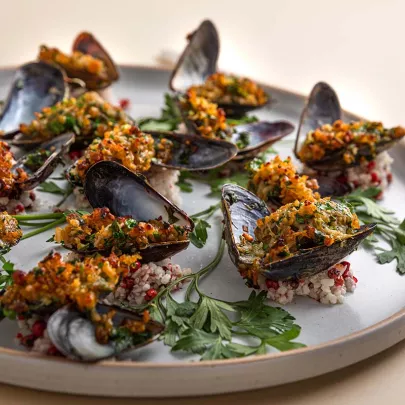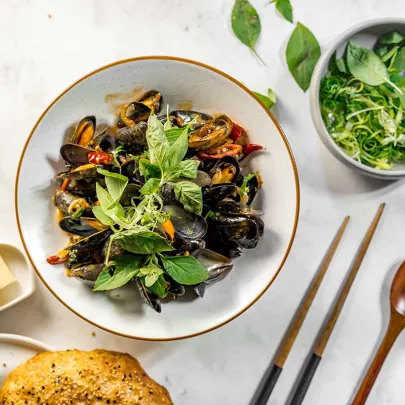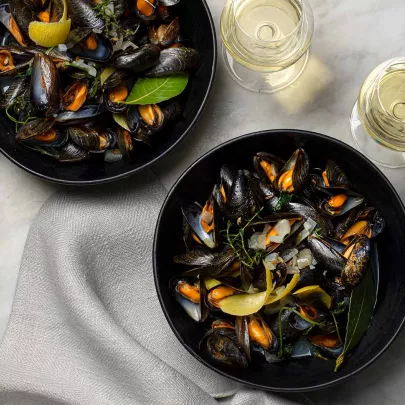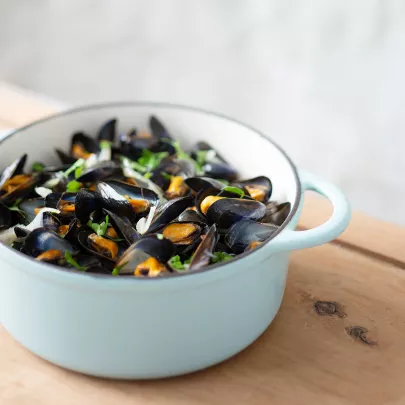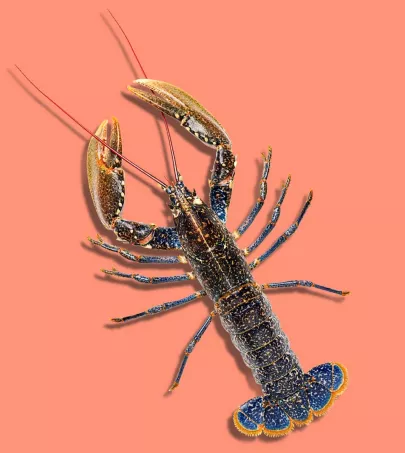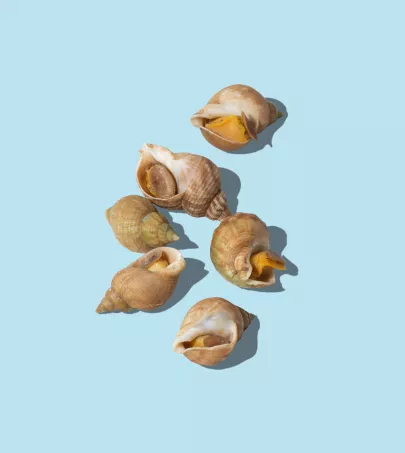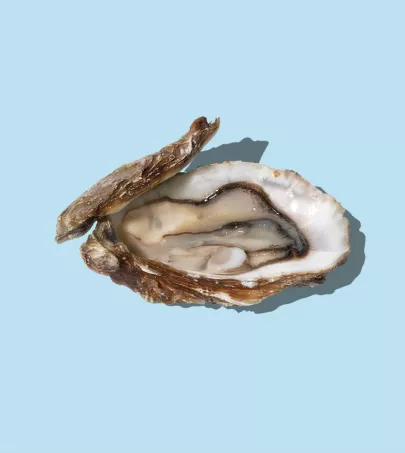Bouchot mussels have delicate, creamy flesh and make up the bulk of mussels produced in France. The method used to cultivate them, on wooden poles called "bouchots", has earned them the "Traditional Speciality Guaranteed" label.
What you need to know
The mussels are bred on thousands of lined-up poles, from two species: Mytilus edulis and Mytilus galloprovincial, selected because of their resistance and suitability for this type of farming. The mussels are born in the early spring, between the Charente and the Loire. Ropes are strung horizontally to first catch the spat (mussel embryos), which attach to them. From June until late summer, these ropes are then arranged on wooden frames known as "chantiers". This is where the spat grow. From September, the ropes are wound around the poles, at least 12 inches from the bottom. This keeps them safe from predators and prevents the flesh from taking on a muddy flavor. To protect the mussels from crabs, the stakes are wrapped in a "hula skirt" made of plastic strips. The shellfish continue growing through the winter and spring. Throughout their development, the mussel breeders monitor them, removing algae and keeping them safe from predators. After a year on the poles, the mussels can be harvested mechanically with an amphibious boat or tractor. They are then washed, sorted and packed.
Characteristics
Look
Taste
Nutritional benefits
Mussels are rich in protein and low in fats and carbohydrates. They are also amongst the richest foods in calcium, magnesium, iron, zinc and selenium. They contain 3 times more iron than red meat, as well as two powerful antioxidants, taurine and cysteine.
Editor's note
How to use
Storing Bouchot Mussels
Bouchot mussels can be kept for a maximum of 48 hours after purchasing, in the vegetable drawer of the refrigerator, wrapped in a damp cloth. If eaten raw, they must be consumed on the day of purchase.
Preparing and Serving Bouchot Mussels
1 lb of mussels make up one serving. Scrape off any residue present on the shell, remove the excessive filament and scrub them to remove any sand. Once cooked, it is important to discard any mussels that have not opened. They only take a few minutes to cook in a large cooking pot. The pot should only be half filled and the mussels should be mixed frequently to ensure they cook evenly.
Tasting Tips Bouchot Mussels
The meat can be removed from inside the shell using an empty shell like tongs.
Pair with
Cream, white wine, shallots, curry
To drink: Muscadet, Chablis, Entre-deux Mers, Pouilly-Fumé.

